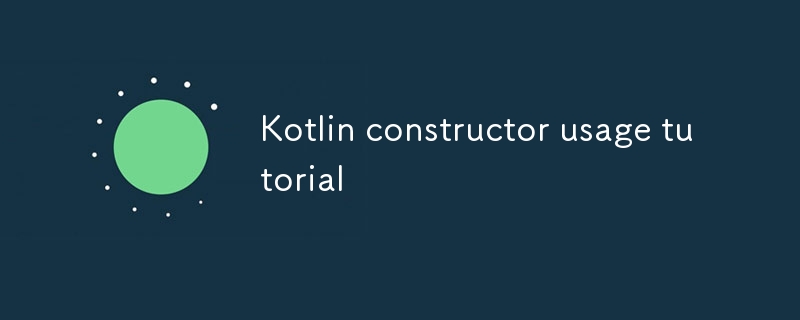This article explores the different types of constructors available in Kotlin, including primary, secondary, and init block constructors. It provides a step-by-step guide to creating custom constructors, including defining the constructor, initializi

What are the different types of constructors available in Kotlin?
Kotlin provides several types of constructors to initialize class instances:
- Primary constructor:The primary constructor is declared as part of the class header.
- Secondary constructor:Secondary constructors are declared using the
constructorkeyword.constructorkeyword.
- Init block:Init blocks are used to perform additional initialization after the primary constructor has run.
How to create a custom constructor in Kotlin?
To create a custom constructor in Kotlin, follow these steps:
- Define the custom constructor:Declare the constructor using the
constructorkeyword, followed by the list of parameters.
- Initialize the properties:Use the
this
- Init block:Init blocks are used to perform additional initialization after the primary constructor has run.
How to create a custom constructor in Kotlin?
To create a custom constructor in Kotlin, follow these steps:
Define the custom constructor:
- Declare the constructor using the
constructorkeyword, followed by the list of parameters. Initialize the properties:
- Use the
thiskeyword to initialize the properties of the class using the constructor parameters. Add any additional logic:
- You can include additional logic in the constructor, such as performing validation or setting default values.
What are the benefits of using constructors in Kotlin?
- Using constructors in Kotlin offers several benefits:
Encapsulation: Constructors enforce class invariants by allowing only valid object states to be created.Modularity: Constructors help in organizing and maintaining the code by encapsulating the initialization process.Testing: Constructors can be easily tested to ensure they are correctly initializing objects.Overloading: Multiple constructors can be defined for a class, providing flexibility in object creation.
The above is the detailed content of Tutorial on using kotlin constructor. For more information, please follow other related articles on the PHP Chinese website!






